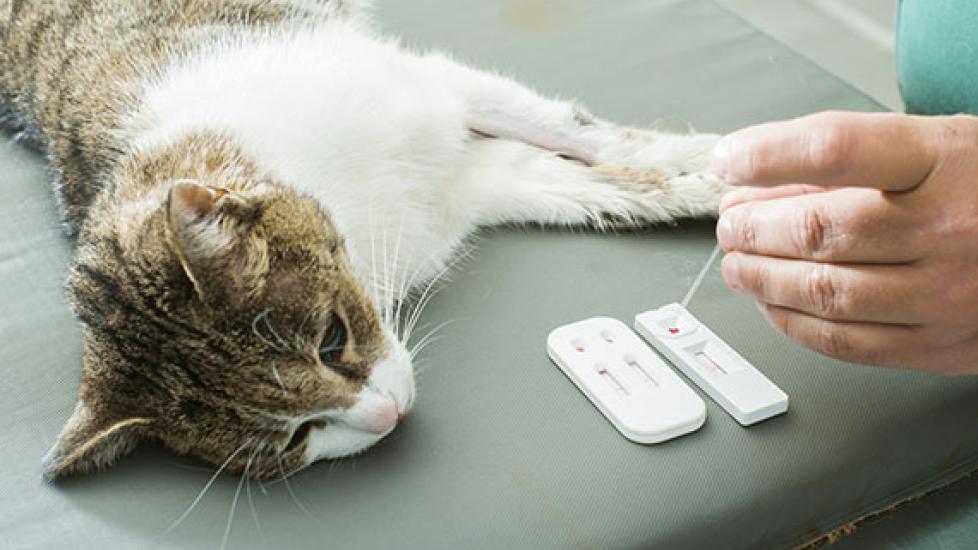When Your Pet's Cancer Tests Prove Nothing, What Then?
Diagnostic tests are essential to my daily activities as a veterinary oncologist. For example:
I require a complete blood count (CBC) test before every chemotherapy treatment.
I analyze results from fine needle aspirates and biopsies in order to formulate therapeutic plans.
I use radiographs (x-rays) to look for metastasis (spread) of cancer to internal organs.
I request ultrasounds to compare tumor size before and after therapy to ensure success.
Every test I order requires interpretation. The expectation is that I will always know precisely how to do so. The reality is I typically do. But sometimes I struggle to decipher the precise “next best step.”
Results typically exist either on a quantitative (yes or no) or qualitative (sliding scale) basis. Most owners assume I’ll present them with the former. Their dog’s CBC will either be good or bad. The aspirate will show cancer or a benign growth. The radiographs will depict metastases or be clear. The ultrasound will measure growth or shrinkage.
Unfortunately, with few exceptions, nearly all results possess some degree of intrinsic qualitative characteristics.
The patient’s platelet count on their CBC may be considered adequate for administering chemotherapy, but if the numerical value is 50% lower than it was the week prior, I’ll pause to ask “why?” before ordering their drug.
Aspirates can show cancer but still not provide enough information to give me the exact tissue of origin, precluding a specific treatment plan.
Radiographs can suggest spread of cancer, but the pattern could also result from pneumonia or asthma, offering three completely different diagnoses and prognoses.
The ultrasound might reveal a change in the appearance, but not size, of a tumor, leading to the possibility that the cancer is not as well controlled as the measurements imply.
Ambiguous outcomes are, at minimum, frustrating for both veterinarians and owners. More often, if owners are unaware of the possibility of an indeterminate result, they could over interpret the equivocal diagnostics, inappropriately assuming an incorrect positive (or negative) conclusion.
The utmost unfortunate situation occurs when owners, unprepared for the possibility of inconclusive results, leave the clinic focused on how they’ve spent a great deal of money on tests they feel showed “nothing.”
Through personal experience, I’ve learned the importance of explaining anticipated uncertainties prior to an owner committing to any given test. The most important warning I can offer to an owner is, “absence of evidence is not evidence of absence.”
Consider the usefulness of thoracic radiographs (chest x-rays) for predicting metastasis in a dog diagnosed with appendicular osteosarcoma (a form of primary bone cancer).
Evidence based information based on studies with hundreds of dogs tells me that 1) greater than 90% of dogs with osteosarcoma will have negative thoracic radiographs at the time of diagnosis, and 2) within 4-5 months following amputation of the tumor-containing limb, 90% of those same dogs will develop radiographically detectable tumors in their lungs.
We conclude that the metastatic tumors were present when the first set of x-rays was taken, despite the report indicating the scans were clean. Clearly, the absence of evidence on the first set of x-rays is not absolute evidence of the absence of tumors for the majority of dogs.
To make a medically appropriate choice for their dogs with osteosarcoma, owners need to be aware of the predictive value of the first set of radiographs, and that the lack of initial spread of disease doesn’t preclude future metastasis. This also underscores the importance of repeating x-rays at specific time points following surgery.
Medical analyses are a necessary part of the treatment plan for my patients. They are an essential part of monitoring and ensuring pets are healthy enough to withstand further procedures and therapeutics.
I rely on my experience and intuition to fill the gap when results are confusing or inexact. Those same attributes allow me to predict the possibility of an uncertain answer and to talk about those possibilities with owners before reports are entered into their pet’s chart.
Owners should also feel comfortable enough to ask their veterinarian about the expected possible outcomes of recommended tests, including the positive, negative, and “in between” results.
This will ensure that expectations are clear on both sides, so that we can each contribute to the optimal treatment plan for the pet.

Joanne Intile
